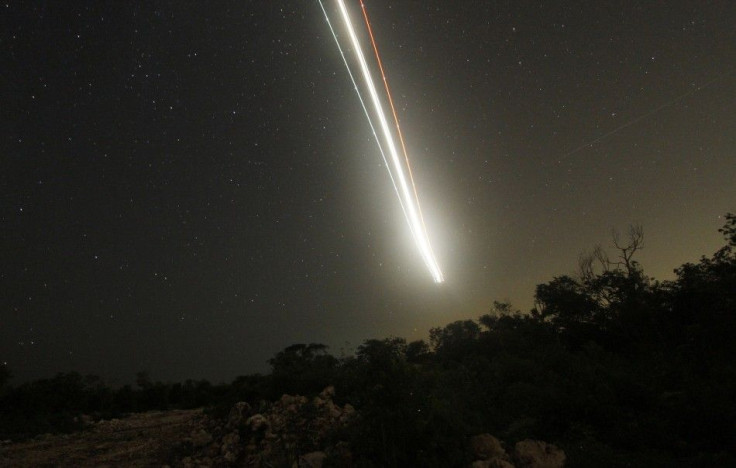Best Ways to Watch Perseid Meteor Shower, Despite Full Moon Interference

As the Perseid Meteor Shower approaches its peak time in the overnight hours of Friday and Saturday, the best viewing days of the dazzling sky event have already started.
The Perseid meteor shower occurs when earth's orbit collides with some of the debris left by the passage of the Comet Swift-Tuttle, and is known as the most reliable meteor shower of the year.
The shower gets its name from the constellation Perseus, itself named for a Greek hero. Perseus famously slayed the gorgon Medusa and went on a number of brave adventures. The meteors appear from the middle of this constellation when observed in the night sky. Perseus will be at its peak during these pre-dawn hours as well.
The Swift-Tuttle comet originally passed through the inner solar system in 1862, and it derives its name from the men who discovered it, Lewis Swift and Horace Tuttle. It most recently returned in 1992.
The Perseids are typically fast, bright and occasionally leave lingering trains. A Perseid fireball would sporadically blaze up brightly to add to the spectacles in the night sky. Normally, Perseid peaks at 100 or more meteors per hour in the absence of moonlight on new moon
Unfortunately, this year's Perseid is interfered by the full moon on its peak night, Aug.12. The brightness of the moon will wsh out all but the brighter of those spectacular shooting stars.
While the several nights before the peak give you better chances to observe the beauty of meteors on the dark sky, it is too early to give up on the full moon-lit sky this weekend.
Turn your back on the bright moon, and look mainly to the northwest, below the summer triangle of Vega, Deneb, and Altair. Space.com also advised stargazers to look away from the radiant, because the longest and brightest meteors will be about 90 degrees away. The radiant is now located in the constellation Cassiopeia, not Perseus, with its characteristic "W" shape.
The best hours for the meteor shower to monopolize the night sky is after the moon has set and before the sun rises. Following the best viewing nights on Tuesday and Wednesday, Thursday night will also see a window of dark skies, while it's shorter. The meteor will be best seen from 3:29 a.m. to 3:56 a.m. in Boston, and 4:02 a.m. to 4:32 a.m. in Washington D.C. on Thursday, according to a table provided by Space.com.
On the very night of Friday to Saturday, 2 a.m. will be the peak of the Perseids, when over 100 meteors per hour will light up the sky.
"The Perseids are always an exciting meteor shower to watch out for. Even in large cities it's often possible to catch site of some of the brighter Perseid meteors streaking across the sky, but from a really dark site you can sometimes see dozens per hour,' Dr Marek Kukula, public astronomer at the Greenwich Royal Observatory in London said.
"Despite this year's Perseid shower coinciding with the full moon it's still well worth going out for a look. The meteors can appear anywhere in the sky so try looking away from the bright moon to maximize your chances of seeing one," she added.
Also remember to allow at least 20 minutes for your eyes to become fully adapted to the darkness.
Sky watchers are encouraged to escape the city lights and head out to the countryside where the stars and meteors will be at their brightest.
Among the locations highlighted by the National Trust are the area around Stonehenge in Wiltshire and Mam Tor in the Peak District, high above Sheffield.
For more information on where to watch the Perseids, The National Trust has produced a handy online guide to star gazing and listed some of its best 'dark skies' locations to catch a glimpse of this special and natural light show.
This year the National Trust is working with the team at meterowatch.org (twitter.com/virtualastro) to track the meteors from the Perseid shower as they appear. Tweeting the hashtag #meteorwatch on twitter, with the first part of a postcode and how many meteors seen will build an interactive map of the UK. As well as the map, meteorwatch.org is where you can find all the tips you need for observing the Perseids and lots more info, their website says.
© Copyright IBTimes 2024. All rights reserved.











